Pros
Cons
Tour
The ATH-ANC7s are a smallish set of over-ears. They're predominantly black plastic with a soft, leather-printed material covering the padding.

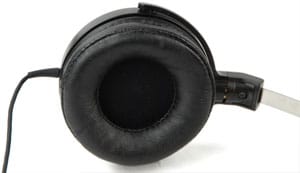
The padding is slightly triangular, with more padding toward the outside edge and less towards the inside.
The band is extendible and has a metallic interior. The top of the band has some padding.
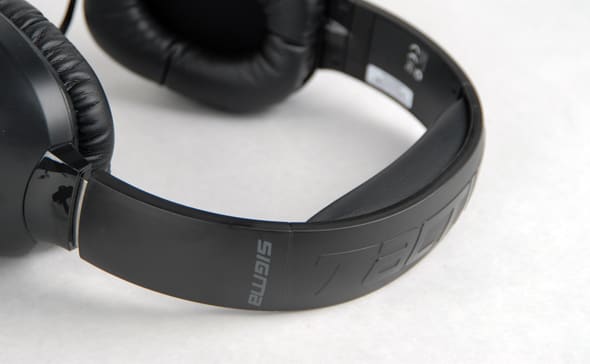
The left ear cup is the busiest side, with the on/off switch, battery cavity, and cable jack.
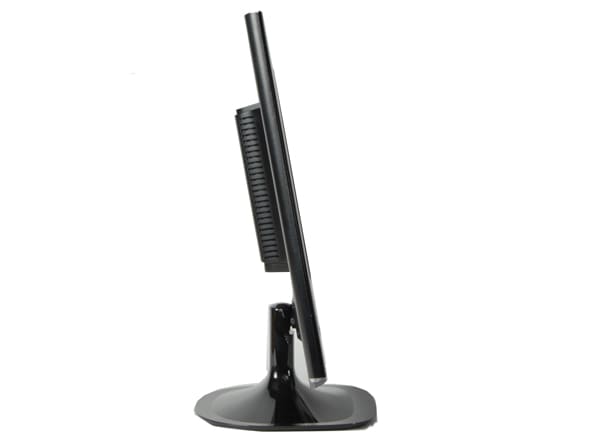
The battery cavity is on the top of the left ear cup, but you'll have to swivel the band out of the way to access it. Also, the markings on the headphones seem to contradict each other on which way you put the battery in. Pictured below is the incorrect way; the positive end should stick up.

The left ear cup is also where you'll connect the headphones' cable. Since the cable is removeable, it gives users the option to connect in-line accessories.

Below are some pictures of the headphones on HATS. Use these pictures to help gauge how they would look on your own head, provided you're a horrible mutant with greenish-gray skin and no eyes. The main thing to note are the two large gaps in the first picture, just above the ear cups. These giant spaces could look a bit silly on some.
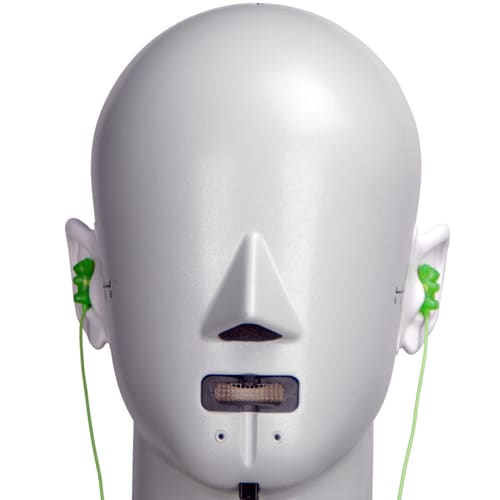
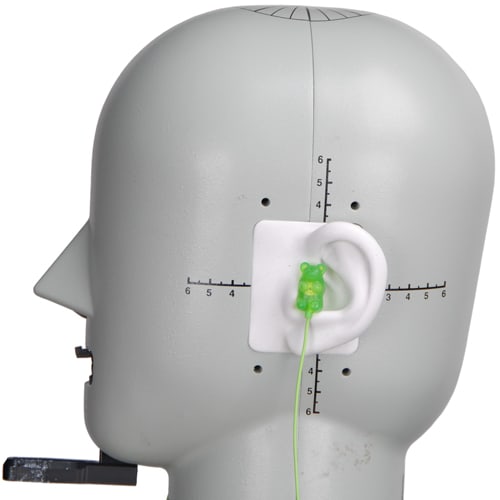
In the Box
{{section_header}}{{section.name}}{{/section_header}}
In the ATH-ANC7s' box you'll find the headphones, a case, a removable cable, airplane and 1/4-inch adapters, and an AA battery.
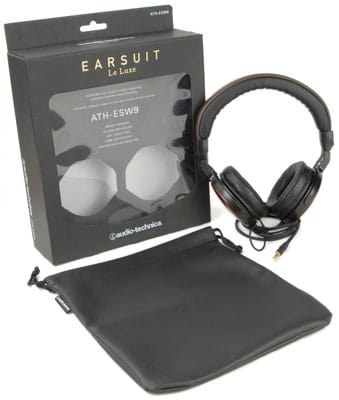
Durability
{{section_header}}{{section.name}}{{/section_header}}
The ATH-ANC7s seem to have above average durability. They have a good cord guard around their plug, and the plug itself is bent at a 90-degree angle. This design tends to last a bit longer than straight plugs, which can quickly wear down the cables inside the cord.
Aesthetics
{{section_header}}{{section.name}}{{/section_header}}
The ATH-ANC7s are a small set of over-ears, slightly larger than the Bose QuietComfort 3s. They have a very reserved aesthetic, but it's clean, simple, and won't make you feel like you're making a statement. While we definitely think these are good-looking headphones, they're also a bit bland. These are average-looking headphones. This will be preferable for many users, but boring for the rest.
Summary
{{section_header}}{{section.name}}{{/section_header}}

The ATH-ANC7s are a pair of active noise cancelling over-ears from Audio-Technica. The ATH-ANC7s have the ability to turn their active noise cancellation feature on and off, which immediately puts them leagues beyond many other active-cancellers. The headphones can also play back music once their batteries have died, or without a battery at all.
Frequency Response
{{section_header}}{{section.name}}{{/section_header}}
The Audio-Technica ATH-ANC7s' frequency response was good overall. It starts out with a slight boost to the bass that will make lower frequencies sound strong, but not overly boomy. The graph then stays within the limits with two exceptions. The first is negligible, where the right channel peeks above the top limit. The second is slightly more severe, where the left channel dips below the lower limit. This still isn't that bad of an issue, however, since the amount of de-emphasis is relatively minor.
The ATH-ANC7s have a fine response overall. It isn't perfect, but its imperfections aren't particularly noteworthy. They also have a dynamic lilt, meaning you should listen to them before you buy them, in order to discern whether or not you like their sound.
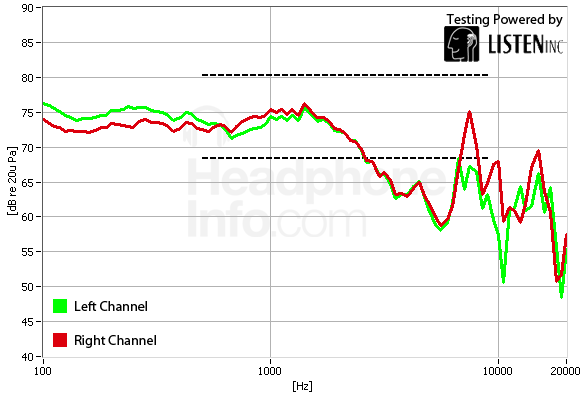
The average score for this section is exactly 4.00, so the Audio-Technica ATH-ANC7s are above average. They actually managed to score better than all of the comparison headphones below, which all went outside the scoring limits by significant amounts.
This was actually a surprising result on a set of active noise cancellers. As you can see by the comparison headphones below, active-cancellers aren't known for having the most even frequency responses.
Distortion
{{section_header}}{{section.name}}{{/section_header}}
The ATH-ANC7 did have some small issues with distortion, showing a bit around the 1kHz mark and a blip further down the line that was only present in the right channel. Generally active noise cancellation headphones have issues with distortion, because playing inverse soundwaves back along with your music can either add noise or cancel out some of your playback as a side-effect. The ATH-ANC7s follow in this tradition.
We were surprised, however, to see distortion levels were actually significantly smaller when the active cancellation feature was engaged. When the feature was turned off, the graph displayed about 4% distortion at the 100Hz level. After the distortion problems in the bass, however, the headphones displayed less distortion around the 1kHz mark. Regardless of whether noise cancellation was turned on or off, the right channel still showcased that tiny 1% blip towards the higher end.
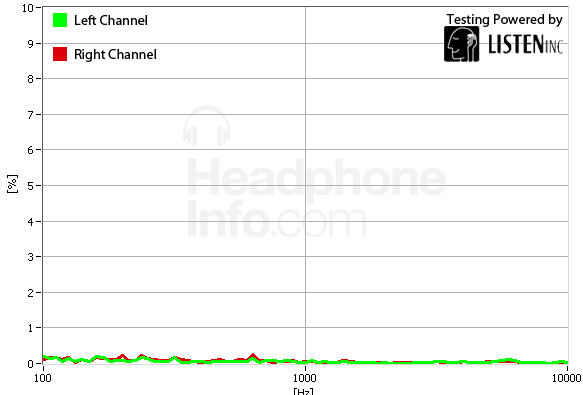
The ATH-ANC7s actually scored the lowest out of all the comparison headphones. This is partially due to the distortion staying above 0.5% for the first half of the graph, rising at the 1kHz mark, then dropping back down closer to zero. It's also partially due to the spike in the right channel, but since that incident only affects a small area, it doesn't account for much.
Tracking
{{section_header}}{{section.name}}{{/section_header}}
The ATH-ANC7s actually did well on this tracking test, despite the rather rough-looking graph to the right. The main area of concern is that dip around 1kHz, where the right channel increases in volume. This swing, however, is less than 5dB, which isn't a particularly noticeable amount. Also, the transition isn't particularly steep. On the way up, the line is more steep, but again, since we're dealing with such small fluctuations – 2.5dB louder on the right to 2dB louder on the left – we doubt anyone will notice.
After that initial dip, the graph gets slightly erratic, but again, the individual fluctuations won't be noticeable. There is a significant drop towards 10kHz, but all headphones have odd tracking towards the high end. This is partially due to HATs inability to provide 100% accurate results for the extreme low or high end. We thusly don't score on those areas, but we leave them in the graph to show a general trend. For example, in the graph at right, you could expect the right channel to become louder than the left, then the left will gradually usurp the right.
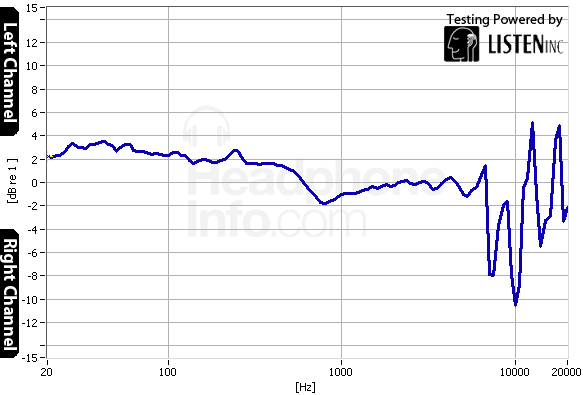
The ATH-ANC7s did very well here, coming in second place to the Shure SE420s. If you look at all the graphs, the only comparison that might not be clear is between the ATH-ANC7s and the Sony MDR-NC500Ds. First of all, the dips and peaks on the NC500Ds are slightly larger. Second of all, the graphs we display here are normalized, to enhance their readability. One of the NC500Ds' peaks or valleys might be slightly more extreme than what's pictured here.
Maximum Usable Volume
{{section_header}}{{section.name}}{{/section_header}}
The ATH-ANC7s are capable of outputting 114.00 decibels, which is average. Most headphones can output 110-120dB, which is what we award maximum points for. Anything louder than that is damaging. Reaching 114dB without significant distortion levels isn't bad, and should appease most listeners. If you want your headphones to be louder, you could check out the Shure SE420s or the Bose QC3s.
One thing to keep in mind: the ATH-ANC7s are louder when their active cancellation is turned on. We're guessing they use some of the battery life to boost volume levels.
Isolation
{{section_header}}{{section.name}}{{/section_header}}
The active cancellation feature is a bit weak on the ATH-ANC7s. Typically active cancellers block out a lot of bass. While the ATH-ANC7s will block out more bass with active cancellation turned on as opposed to when it's off, the difference isn't as significant as we usually see.
Also, note how the active cancellation's graph dips below the passive cancellation's graph above 1kHz. This means the active cancellation feature is actually generating more noise than it's blocking out at this level. This is an unfortunately ubiquitous side-effect of current active cancellation technology.
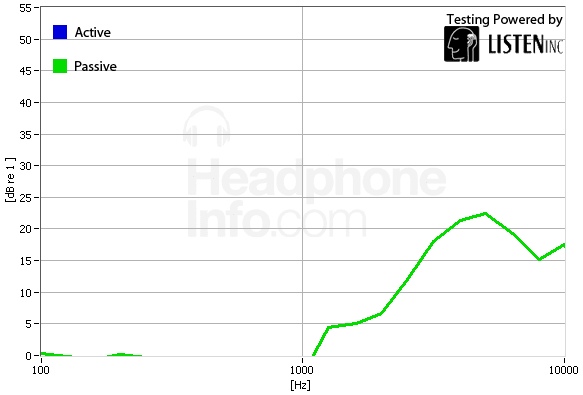
As you can see below, the ATH-ANC7s aren't the best active-cancellation headphones. While they will help reduce a lot of bass noise, they simply don't block out as much as many of the competing models. Like most other active-cancellers, the feature does create a bit of noise above 1kHz. You would be better off with a pair of in-ears, if you don't mind the aural intrusion.
Leakage
{{section_header}}{{section.name}}{{/section_header}}
The ATH-ANC7s leak like crazy. This is really unfortunate on an active noise canceller. When you put on active-cancelling headphones, even ones with weak cancellation, they create a strong sensation that you're isolated from the outside world. This is rarely the case, however, because unlike passive cancellation, active cancellation only works one way: by dampening incoming sounds. Active cancellation (currently) does nothing to dampen outgoing sounds. Therefore, while you're listening to Barbie Girl by Aqua, thinking you're enjoying your 90s Mega-hits CD in total privacy, everyone around you will be able to hear every word. Leakage is exacerbated with the volume of your playback, but even at a moderate volume level the person next to you on a bus or anyone in a neighboring cube at your office will be able to hear your playback. These are not headphones to wear at your local public library.
Short-Term Use
{{section_header}}{{section.name}}{{/section_header}}
Our standard subjective-section caveat applies here: your head is likely shaped nothing like our own, so you should therefore only use this section as a rough guide of what to expect.
We thought the ATH-ANC7 headphones were decently comfortable. They don't lock your head in a vice grip, but don't move around much. This is partially due to their cup design, which fits your ears inside the cup padding. This makes it a bit hard to get them to fit on your head correctly, but keeps them on once you have.
Extended Use
{{section_header}}{{section.name}}{{/section_header}}
After a wear session of six hours, our opinions of the ATH-ANC7s comfort were exactly the same. The pressure didn't exacerbate over time, the band didn't start to put pressure on the top of our soft heads, and the ear cups didn't make our ears particularly hot (which is a problem with over-ears). While these headphones aren't the most comfortable we've ever worn, they're also more comfortable than average.
Cable Connectivity
{{section_header}}{{section.name}}{{/section_header}}
The ATH-ANC7s' cord is just over 5 feet in length. This is a good size for a cable, as long as you're intending to connect to your front pocket; if you're still rocking your cargo pants from the 90s, it'll stretch down to your second set of pockets.
The headphones also come with the two standard adapters: 1/4-inch and airplane.

These are the two cords that come in the box. It would've been nice to have a male-to-male connector to form one long cord, but alas, we do not live in such a world.
Customizability
{{section_header}}{{section.name}}{{/section_header}}
There aren't any real customization options included in the packaging. You can tilt the ear cups and swivel them slightly, the band extends, and you can remove the cord to use your own. There are no additional faceplate or padding options, or optional accessories included.
Portability
{{section_header}}{{section.name}}{{/section_header}}
These headphones, as over-ears, aren't the most portable headphones out there, but they are more portable than a lot of other over-ears. This means you won't be able to just shove them into your pocket like you could a pair of in-ears, unless you have remarkably spacious pockets. It also means you will be able to carry them around more easily in your bag/purse/luggage than you could, say, the ATH-A700s.
The headphones do come with a case, which will keep your headphones and their accessories safe and organized. Of course, the case itself isn't magically smaller than the headphones, meaning you will need a bag to hold it.
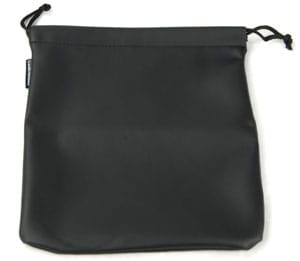
The pouch doesn't have any inner pockets or cord-managing features, so it's not particularly helpful.

The pouch doesn't have any inner pockets or cord-managing features, so it's not particularly helpful.

The pouch doesn't have any inner pockets or cord-managing features, so it's not particularly helpful.
Maintenance
{{section_header}}{{section.name}}{{/section_header}}
Unfortunately, the ATH-ANC7s are very hard to disassemble. The cup padding is stuck on with glue, so unless you have some rubber cement and a steady hand, you might not want to try pulling them off. If you do pull off the padding, you'll find a thin piece of foam covering up the headphones' innards. We wish manufacturers would stop using glue and start using screws.
Other Features
{{section_header}}{{section.name}}{{/section_header}}
Battery
The ATH-ANC7s do not require a battery to play back music. This is definitely a great feature since many, many active-cancellers do require batteries, or else they won't work at all.
The headphones do require batteries for their active noise cancellation feature, however. The headphones will be able to get about a 40-hour charge off a single AA, which is pretty good.
Active Noise Cancellation
The active noise cancellation has an average implementation. You can turn it on and off, but it doesn't have any bonus features.
Value
{{section_header}}{{section.name}}{{/section_header}}
The ATH-ANC7s aren't the best, most top-of-the-line active noise cancellers on today's market. They are, however, priced well for what they do. Try to get them for about $100. You can find them for a few bucks less, but many places sell them for more: we saw them retailing for as much as $130. At $130 they're obviously not as great a deal, but they're not bad. We see the ATH-ANC7s as a pair of entry-level active noise cancelling headphones. If you're looking for your first pair of active-cancellers, this is a great, inexpensive place to start.
Conclusion
{{section_header}}{{section.name}}{{/section_header}}
The Audio-Technica ATH-ANC7 headphones aren't great headphones. They are slightly better than average headphones with the price of actually average headphones. As mentioned earlier in the review, the ATH-ANC7s are actually a great pair of entry-level active noise cancelling headphones. They're not great, but they are surprisingly inexpensive for active cancellers. Typically there's an 'active cancellation tax' since the feature is currently a trendy buzzword, but the ATH-ANC7s are miraculously unaffected by it.
We liked the ATH-ANC7s for what they were. At $100, you could find better full-size headphones or in-ears, but you'd be hard-pressed to find a pair of active noise cancellers. If you want to try out the technology for a spell, or you want to block out sound without blocking up your ear canal, these are a great choice.
Meet the tester
Mark Brezinski works on the Home Team, reviewing refrigerators, minifridges, dishwashers, washing machines, dryers, air conditioners, air purifiers, and fans.
Checking our work.
Our team is here to help you buy the best stuff and love what you own. Our writers, editors, and experts obsess over the products we cover to make sure you're confident and satisfied. Have a different opinion about something we recommend? Email us and we'll compare notes.
Shoot us an email